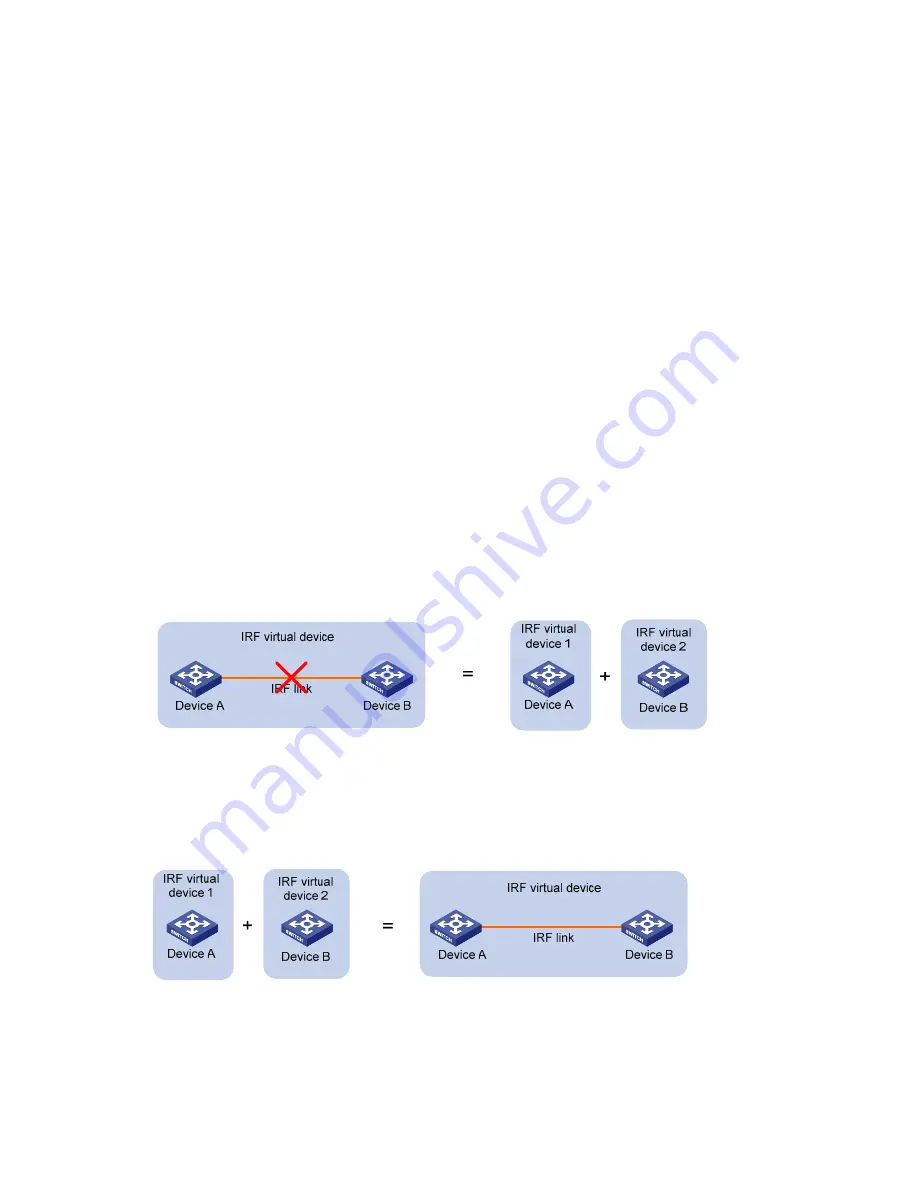
3
Basic concepts
IRF member switch roles
IRF uses two member switch roles: master and subordinate (slave).
When switches form an IRF virtual device, they elect a master to manage the IRF virtual device, and all
other switches back up the master. When the master switch fails, the other switches automatically elect a
new master from among them to avoid service interruption. For more information about master election,
see “
Master election
.”
IRF port
An IRF port is a logical interface for the internal connection between IRF member switches. Each IRF
member switch has two IRF ports: IRF-port 1 and IRF-port 2. An IRF port is activated when you bind a
physical port to it.
Physical IRF port
Physical IRF ports are physical (copper or fiber) ports bound to an IRF port. They connect IRF member
switches and forward IRF protocol packets and data traffic between IRF member switches.
For more information about ports that can be used as IRF physical ports on the A5800 and A5820X
switches, see “
Connecting the IRF member switches
.”
IRF partition
IRF partition occurs when an IRF virtual device splits into two or more IRF virtual devices because of IRF
link failures, as shown in
Figure 3
. The partitioned IRF virtual devices operate with the same IP address
and cause routing and forwarding problems on the network.
Figure 3
IRF partition
IRF merge
IRF merge occurs when two partitioned IRF virtual devices re-unite or when you configure and connect
two independent IRF virtual devices to be one IRF virtual device, as shown in
Figure 4
.
Figure 4
IRF merge







































